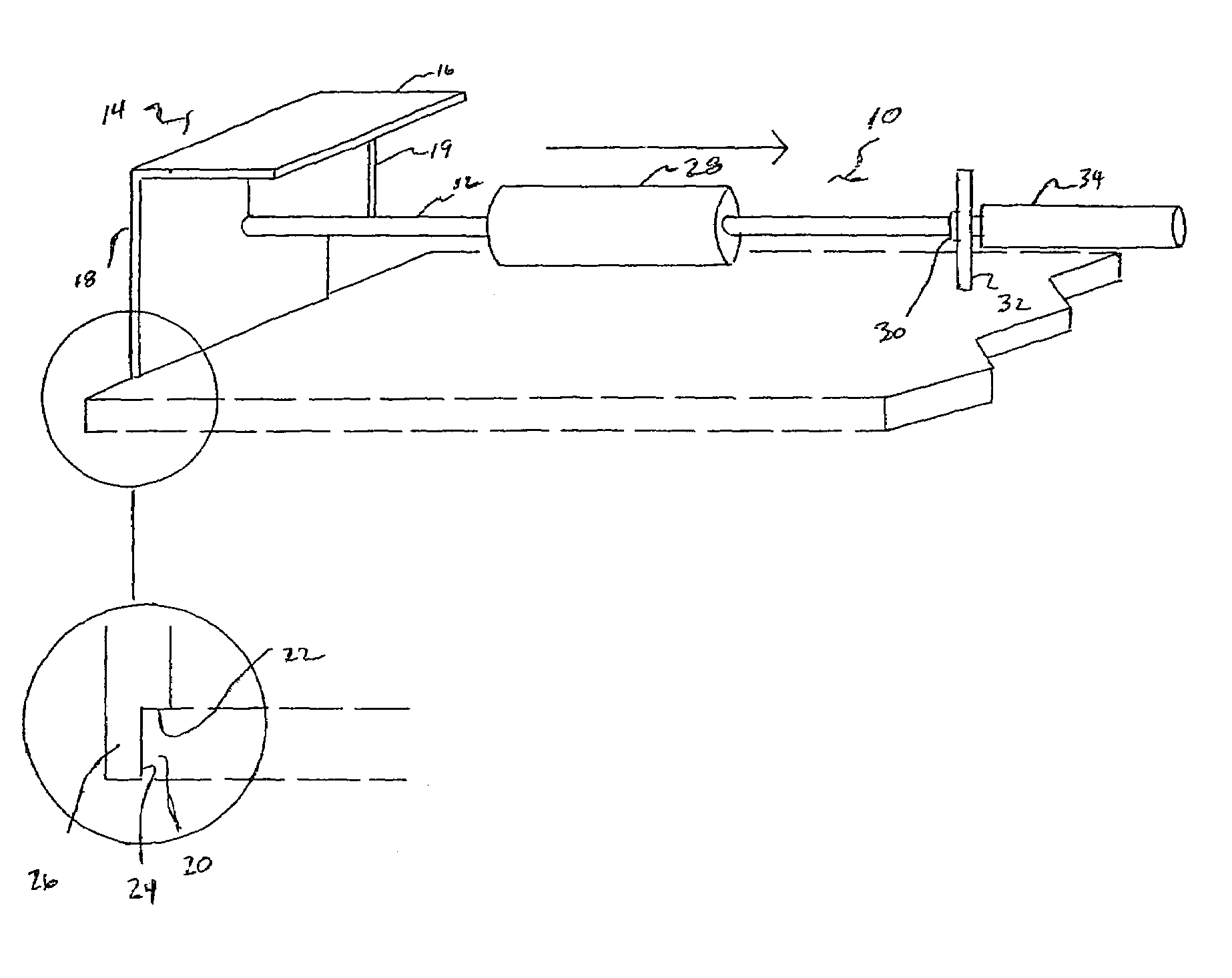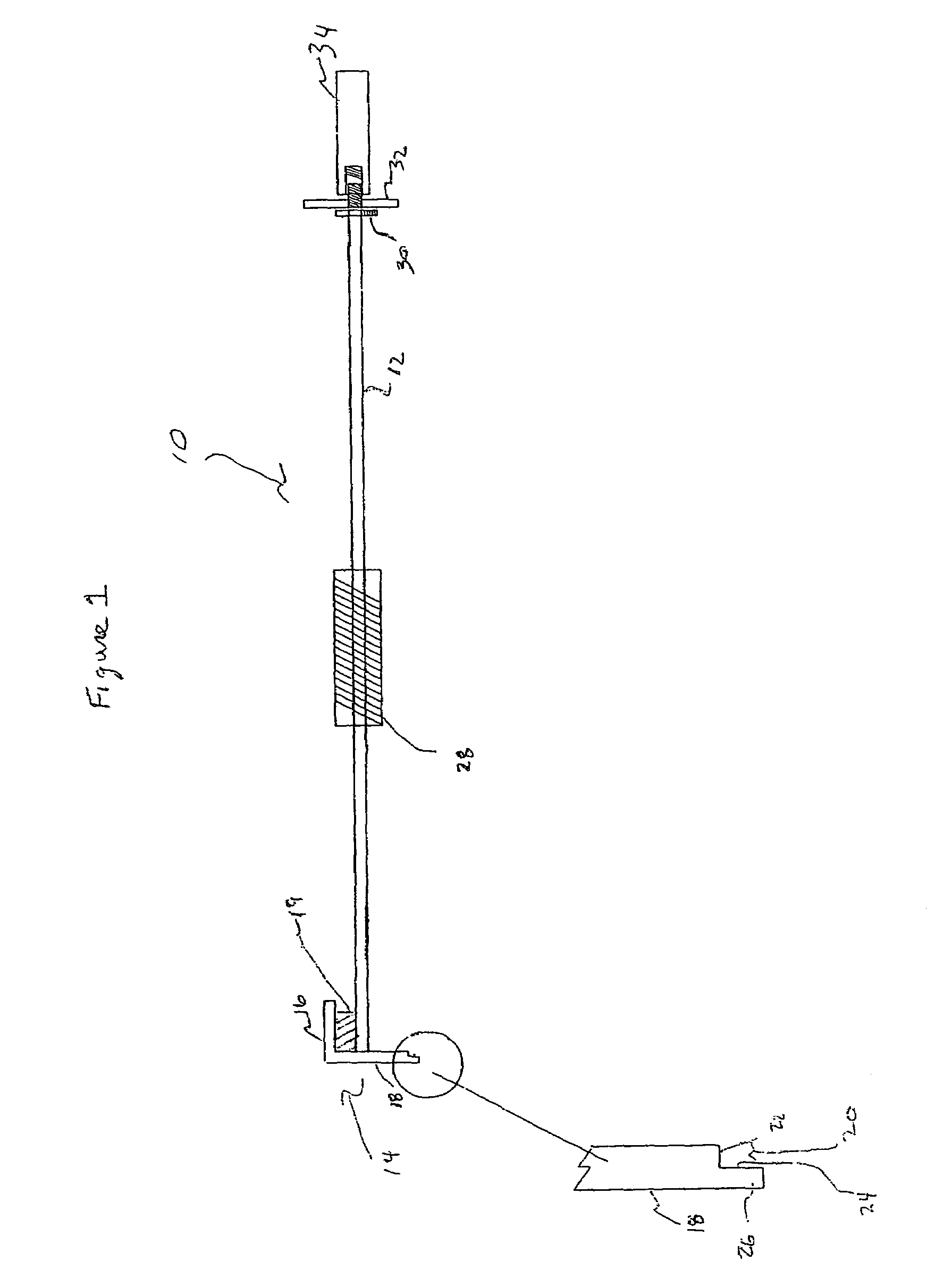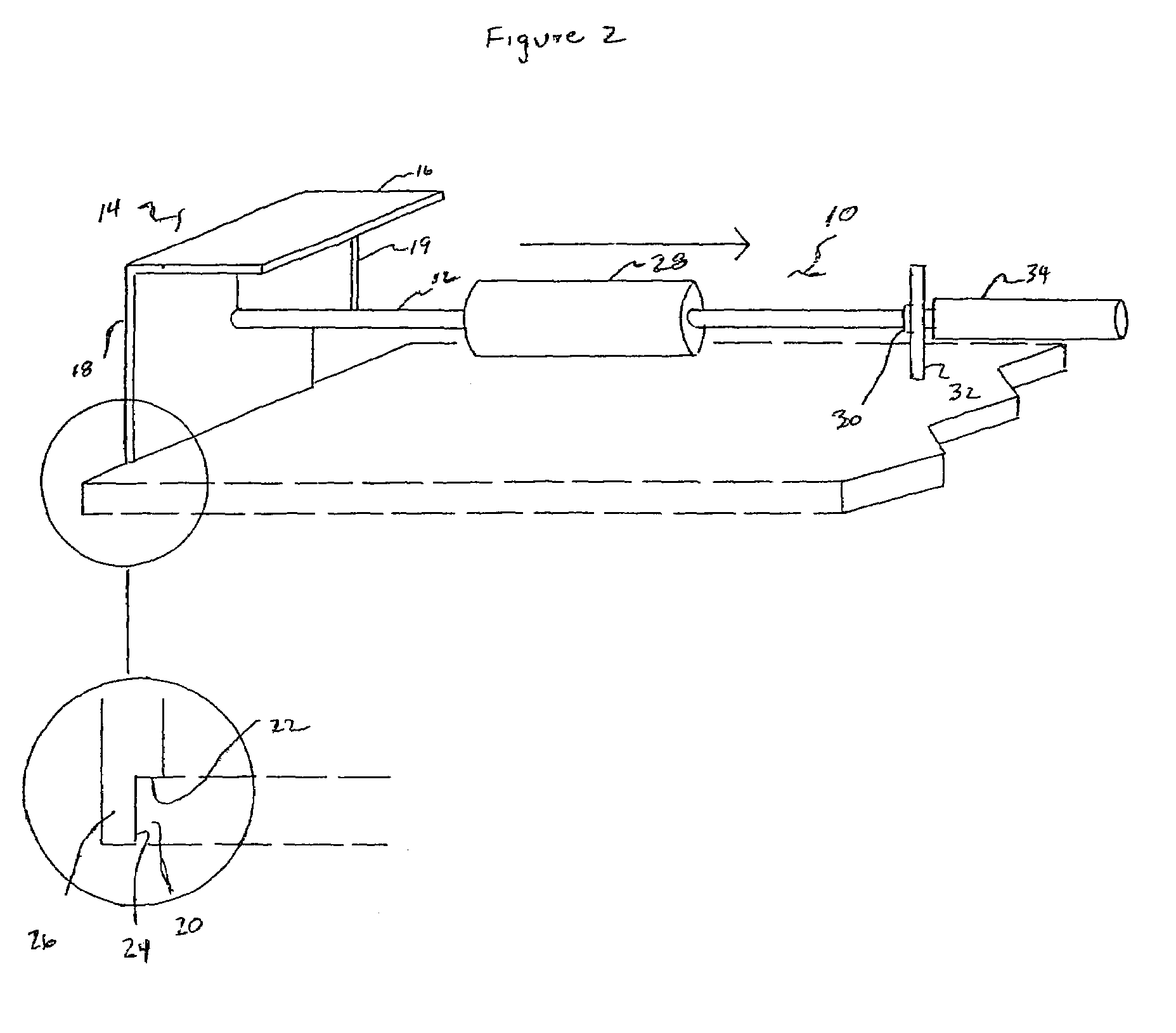Method and apparatus for laying floors
a technology for laying floors and methods, applied in the field of floor laying methods and apparatuses, can solve the problems of unable to generate momentum with a hammer or rubber mallet, simplify the method, and achieve the effect of preventing lifting and facilitating the operation of the apparatus
- Summary
- Abstract
- Description
- Claims
- Application Information
AI Technical Summary
Benefits of technology
Problems solved by technology
Method used
Image
Examples
Embodiment Construction
[0018]Referring to the figures, a tool 10 for abutting or “setting” individual floor panels in an assembled floor near an obstruction can be described. The tool has a rod 12 having a flange 14 attached thereto. The flange 14 has a horizontal portion 16 and a vertical portion 18. Preferably the flange 14 can be made from 2″×3″ angle iron. The rod 12 is attached to the vertical portion 18 of the flange 14. A web section 19 is welded between the rod 12 and flange 14 to add stability to the rod and flange connection. The vertical portion 18 of flange 14 has a notch, designated as 20 in the figures. Notch 20 is defined by a horizontal surface 22 in vertical portion 18 of flange 14, and a vertical surface 24 in vertical portion 18 of flange 14. The notch 20 also leaves a narrow end portion, designated as 26, at the bottom of vertical portion 18 of flange 14. To put the general dimensions in context, the end portion would preferably have a width of ⅛″.
[0019]A weighted cylindrical slide 28 ...
PUM
 Login to View More
Login to View More Abstract
Description
Claims
Application Information
 Login to View More
Login to View More - R&D
- Intellectual Property
- Life Sciences
- Materials
- Tech Scout
- Unparalleled Data Quality
- Higher Quality Content
- 60% Fewer Hallucinations
Browse by: Latest US Patents, China's latest patents, Technical Efficacy Thesaurus, Application Domain, Technology Topic, Popular Technical Reports.
© 2025 PatSnap. All rights reserved.Legal|Privacy policy|Modern Slavery Act Transparency Statement|Sitemap|About US| Contact US: help@patsnap.com



